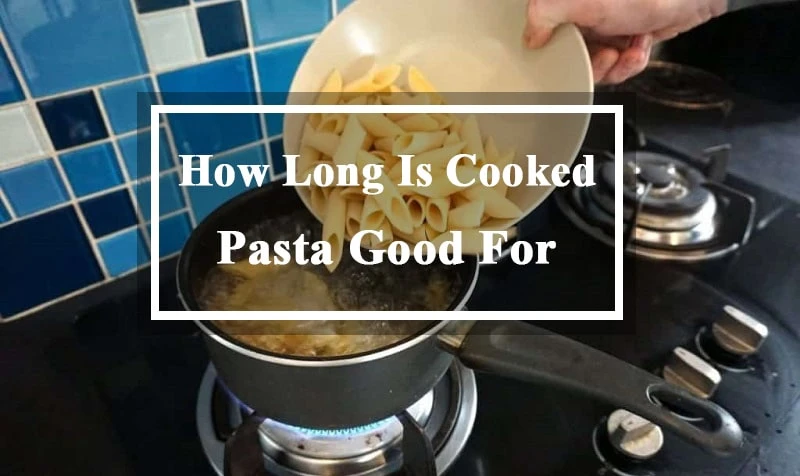by Daisy Dao
Pasta is made from a mixture of eggs, water, and wheat flour and cooked by either baking or boiling. You can form various shapes of pasta while cooking. As you all know, the food freshness starts diminishing the moment you cook it. The same case happens to pasta. When you cook pasta, it glues and clumps together. Therefore, it is essential to cook pasta that is enough for you and your family members without having leftovers.
Contents
However, even if you cook more than enough, you need not worry as there are various methods of storing pasta and consume it later. The procedures apply to different pasta types such as small shells, large shells, lasagna noodles, and penne. Cooked pasta can last for three to five days while it is in the refrigerator. If you keep it longer than that, there is the likelihood of mold increasing and losing its flavor.

There are numerous pasta types cooked in different shapes and sizes. While cooking pasta, you can pair various spices such as tomato sauces, classic marinara, or concoctions. You can also add proteins and veggies. If you cook pasta properly, they are delicious and tasty. Here we will look at the significant types of pasta.
xxSpaghettiIt is the world’s popular pasta type. These are long but thin noodles, which are prepared with various sauces. When cooking spaghetti, you can pair it with meat, marinara, or vegetables.
xxPenneThe pasta type is also popular. The penne are circular tube-like shapes with slanting edges on each side. Penne is served with thick, creamy sauce dishes. An example is Penne Arrabbiata.
Linguine resembles spaghetti but are a bit flatter, and most people refer to them as luxurious dishes. You can pair linguine with seafood, cream-based sauces, or white wine sauces.
xxLasagneIt is one of the typical sheet pasta types. Lasagne has very decorative edges, and it is usually paired between meat sauce and ricotta cheese. You can also fill this dish with meat, mushrooms, among other types of foods.
xxRigatoniRigatoni is similar to penne. They are round tubes with ridges on the outer side. However, Rigatoni does not have slanting edges, and it is relatively wider compared to penne. The large gap at the center allows them to be paired with vegetables, chunky sauces, creamy sauces, or cheese.
xxRavioliThe pasta has a square shape and is usually stuffed. Ravioli has pinched edges and is filled with meat, seafood, cheese, sauces, or veggies and can be served with soups and other dishes.
xxFusilliThese are spiral-shaped noodles with notches and grooves to put sauces. They are strong enough to hold thick marinara. Fusilli is paired with chunky vegetables, meat sauces, and other sauce types.
xxCannelloniCannelloni is a long tube-like structure stuffed with numerous fillings and is a mixture of manicotti and lasagne noodles. You can fill cannelloni with tomato sauce, cheese, meat sauce, and spinach.
xxFarfalleFarfalle has a butterfly shape and is small in size with a larger surface area. It can be paired with rich tomato sauce, cheese, and meat sauce. Serve Farfalle with grilled chicken or soups.
xxMacaroniThese are small curved tubes and do not necessarily hold sauces. You will find them on top of cheese sauce or minestrone.
There are many other types of pasta, but those are the most common. Now that you know different pasta types, we will look at various ways of storing cooked pasta.
Many people want their pasta to last for an extended period. You can only attain this by storing your cooked pasta inside the freezer. It would be best to pack your plain cooked pasta into freezer bags since their thin material is much more suitable than storage vessels’ thicker walls. Before you seal the bag, get out all the air and toss little butter or oil to the pasta.
When you store your pasta in a freezer, it will stay fresh for up to three months. However, if you want to eat fresh pasta, do not store it for more than two months. If pasta is left inside the freezer for an extended period, it can result in freezer burn.
It is essential to store your cooked pasta as soon as you have prepared it. Pasta need not remain unpreserved for more than two and a half hours. If you don’t preserve it as quickly as possible, it might go bad anytime.
To preserve your pasta in a fridge:
You can use any oil, but the most recommended is olive oil for better dish complement. You can also use neutral oils such as vegetable oils or canola. Please, do not put in a lot of oil or butter. One spoonful is enough though you can add depending on the pasta amount. Remember, the primary intention is to ensure that the noodles do not stick together. You can toss using wheat flour if you want to store freshly baked pasta.
Do not store the paste while it is still hot. Ensure it is cool before packing it into the bag or container. Your past can stay in the fridge for three-five days.
There are two ways of storing pasta with sauce. First, you can decide to keep each of them independently or as a mixture of both. When you store them apart, you can use the pasta later paired with another dish. If you keep them as a mixture, there are high chances of the sauce becoming mushy overtime.
You can mix the pasta and the sauce if you use the pasta within a day or two days. When combined, the flavors deeply penetrate inside the noodles, making a tastier dish. Before storing the pasta in the freezer or fridge, ensure you seal the bag or container firmly.
To use the leftover pasta, you first need to know how you want to use them. For instance, if you’re going to use the leftovers as cold pasta like pasta salad, casserole, or pasta frittata, you need to use pasta right away from the fridge.
In case you want or eat warm noodles, put them into boiling water for less than a minute. Do not exceed the one minute as your pasta will overcook. You need to use the same process when reheating the sauce.
If you want to reheat sauced pasta, it is suitable to put it in an oven for around 20 minutes. Use aluminum foil to cover the dish to prevent moisture from evaporating. It will ensure that your pasta has not dried out.
The sauced pasta can also be warmed up using a stovetop. While using this method, ensure you stir the pasta regularly to prevent it from sticking.
 |
 |
 |
 |
 |
 |
 |
 |

About Daisy Dao
Daisy grew up on the beautiful Honolulu island where she often found herself spending most of her day enjoying the ocean scent in sea waves. As such, Daisy came to appreciate the art of cooking seafood. She has experimented with baking, roasting, broiling, poaching, grilling (and every other cooking technique you can think of); and with all kinds of spices too. Now she is ready to present her experience: the art of cooking healthy food without any pre-packaged ingredients; food product recommendations for people who need a bit more guidance on what goes into their bodies; how to maintain an active lifestyle without having to give up your favorite foods!
Check for FREE Gifts. Or get our Free Cookbooks right now.
Disable the Ad Block to reveal all the recipes. Once done that, click on any button below
 |
 |
 |
 |